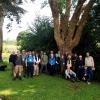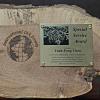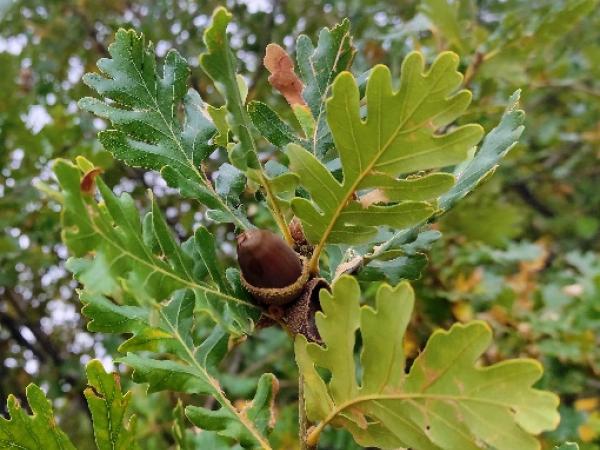Editor's Picks
Plant Focus

Живые памятники: редкие и уникальные деревья и насаждения Беларуси
Living Monuments: Rare and Unique Trees and Forest Stands of Belarus
Pugachevskii, A. V. (ed.). I. P. Vozniachuk, A. V. Sudnik, N. L. Vozniachuk, O. E. Efimova, P. M. Golushko and A. K. Sigida
Minsk: the P. Brovka Belarusian Encyclopedia 2021
The topic of this book is the so-called unique trees and forest stands of Belarus. According to the authors, there are 355 “botanical monuments of nature” declared in the country. Having recognized the fact that there are many more botanical objects that deserve protection—the so-called unique trees and forest stands—the authors set as their goal to identify them, as well as to nominate some of them for the status of a monument of nature. In their quest, they contacted many government and non-government organizations, as well as inviting the general public to inform them if they knew of any such object. As the result of these efforts, 1,304 unique trees have been identified, 90 of which have been nominated by the authors for the status of botanical monuments of nature. This book, containing 359 pages, can be divided roughly into three parts.

In the first part some general information on the nature of Belarus is presented, as well as on the trees considered to be unique. Here we find out that, as of 2019, 39.9 percent of the territory of Belarus is covered with forest, of which only 3.5% is oak. Two species of oak are native to the country: Quercus robur, occurring throughout Belarus, and Q. petraea, restricted only to the very western parts, notably the Białowieża Forest National Park and some adjacent areas. The authors report that a non-native species of oak, Q. rubra, has been planted in Belarus since 1853 and has since become invasive. According to the authors, this species reproduces quite rapidly while its dead leaves decompose slowly, smothering the seedlings of other species. The authors then proceed to define the so-called unique trees and tree stands—the topic of this book—as well as to present legal requirements for declaring them botanical monuments of nature (age, trunk dimensions etc.). The ten oldest trees in Belarus are, all but one, Q. robur, the oldest one being 380 years old. As for the trunk circumference, Q. robur wins the first five places both in the category of open-grown (810 cm) and forest-grown trees (625 cm). The tallest tree in Belarus, however, is not an oak; it is a species not native to Belarus, Larix decidua (50.1 m), followed by Tilia cordata, with Q. robur taking the modest third place (43.8 m).

The second part deals mainly with the protection of botanical monuments of nature, but there is also some very interesting additional information, such as how to properly hug trees, why a tree dies, how to calculate a tree’s age, how to prolong the life of an old tree. Finally, the authors invite readers to submit applications for the status of a botanical monument of nature, and explain the correct procedure.

The third part deals with these unique trees and forest stands themselves, some of which are protected as botanical monuments of nature, some of which are not. Trees growing in national parks, as well as those growing in Berezinski Biosphere Reserve, are not covered by this book (the authors note though that in Bialowiezha Primeval Forest alone there are more than a thousand large oaks, a 400- -year-old oak, and a 380-year-old pine). The unique botanical objects are grouped according to the administrative area in which they grow. Each is typically devoted two pages. The left page holds a photo of the object of interest with the basic data: dendrometry, age, its current state, measures which could improve its state, and its protection status. The right page contains an additional photo, description, and location data, including a QR code. Sometimes additional illustrations are presented, such as photos of the tree from different periods or a tree’s growth-ring diagram. Interestingly, when determining a tree’s age, the authors did core-sampling, which enabled them to determine that the oldest living oak in Belarus is only 380 years old, having previously been estimated to be not less than 800 years old. This myth-busting pattern repeats itself throughout this book. The authors quote forestry expert V. F. Baginskii (p. 30), who reported that in the 1950s he saw old oak loggings with stumps which could accommodate a cart and half a horse. The same author reported that lumberjacks told him stories of even bigger stumps which could have accommodated a cart and a whole horse. The authors of the book report that in their experience such oaks do not exist in Belarus today, nor were they able to find a stump big enough to accommodate a cart on its own, let alone with a horse. If such trees did exist in Belarus, they were unlikely to have survived the World Wars, during which forests were subject to uncontrolled felling (total forest cover fell from 37% in 1901 to 22% in 1917, and from 26.7% in 1939 to 21.5% in 1945). A total of 100 botanical objects are presented, 61 of which refer specifically to oaks (individual oaks, groups of oaks, oak forest). All oaks covered by this book are Q. robur. One interesting thing is that on page 32 the authors inform us that the tallest oak in Belarus is 43.8 m tall, but on page 108–109 we learn of the Boretskaia old growth oak forest, with the average height of 44 m. Furthermore, on page 338 we learn that the Britsalovichskoe Forestry District oak is 44.2 m tall, which is probably a typo, since on page 32 the same oak is noted to be 42.2 m tall.

At the end of the book, there is a list of current and potential botanical monuments of nature.
















